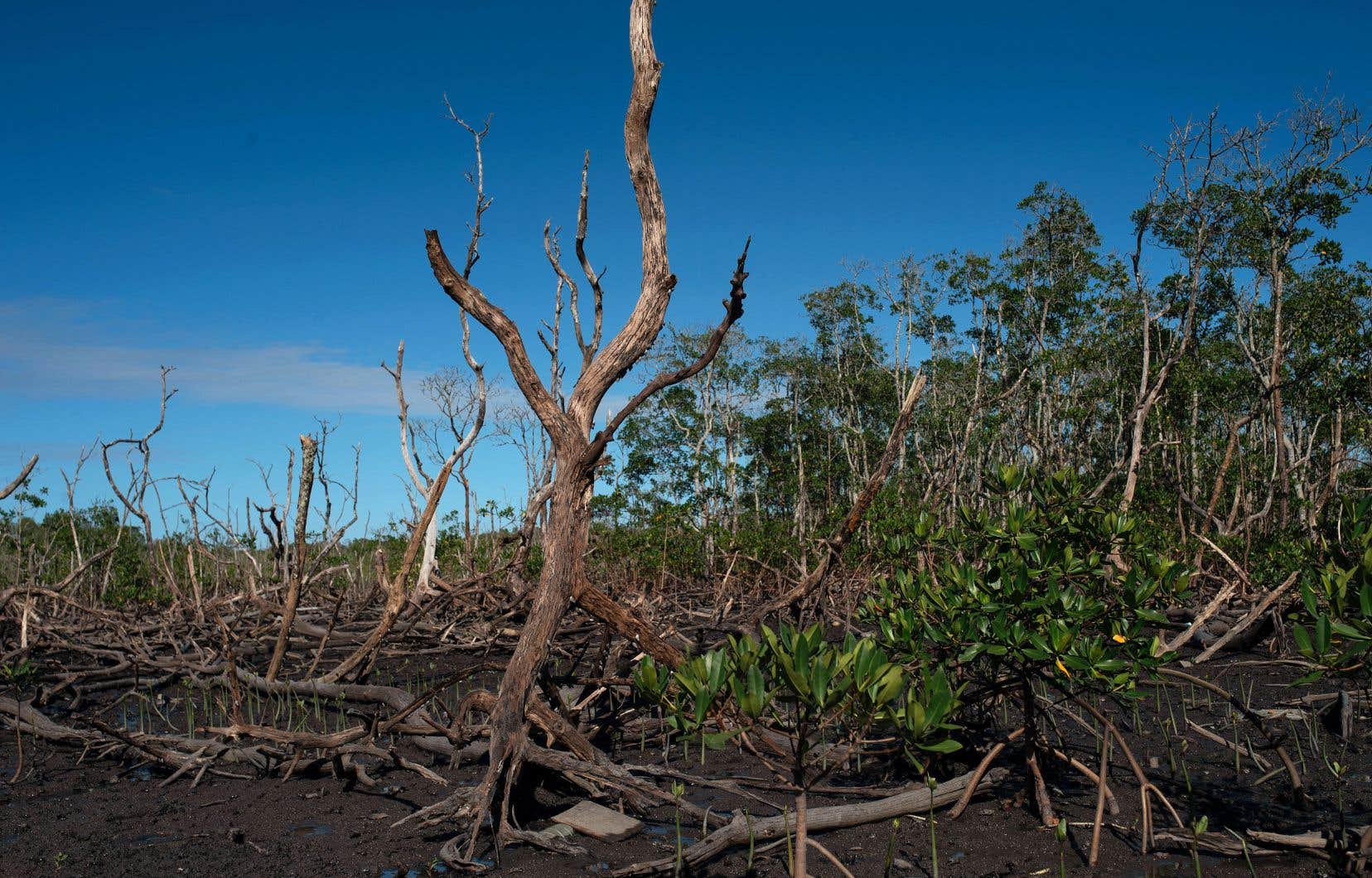Half of the world’s mangrove ecosystems are at risk of collapsing, threatened in particular by climate change, deforestation or pollution, according to a study published Wednesday.
The International Union for Conservation of Nature (IUCN), known for its red lists of threatened species, has for the first time taken stock of the world’s mangroves, evaluating 36 different areas.
“The first global assessment of mangrove ecosystems provides essential guidance that highlights the urgent need for coordinated mangrove conservation,” said Grethel Aguilar, Director General of IUCN, in a statement.
Mangroves, the vegetation growing at the interface between land and sea, are “crucial habitats for millions of people in vulnerable communities around the world,” she added.
Published on the occasion of the International Day for Biodiversity, the study shows that “50% of the mangrove ecosystems assessed are threatened with collapse”. This represents approximately 50% of the global area of mangroves.
Around 20% of them are classified as “endangered or critically endangered”, and are therefore seriously threatened with collapse.
Several threats weigh on mangroves: deforestation, development, pollution and the construction of dams. But the risk to these ecosystems is increasing due to rising sea levels and the increased frequency of severe storms associated with climate change.
Around 15% of the world’s coastlines are covered by mangroves, or around 150,000 km2and they are located mainly along tropical, subtropical and some warm temperate coasts of the world, according to the IUCN.
Disastrous disappearance
Climate change threatens a third (33%) of mangrove ecosystems assessed, due to rising sea levels.
According to estimates, at the current rate, 25% of the global area of mangroves is expected to be submerged in the next 50 years, says the IUCN.
Coastal regions in the Northwest Atlantic, northern Indian Ocean, Red Sea, South China Sea and Gulf of Aden are expected to be particularly affected.
“Mangrove ecosystems are exceptional in their ability to provide essential services to populations, including coastal disaster risk reduction, carbon storage and sequestration, and support for fisheries,” said Angela Andrade, president of the Global Commission on Ecosystem Management at IUCN.
“Their disappearance risks being disastrous for nature and people around the world. This is why this assessment is so important,” she warned.
Assessment shows maintaining mangroves is key to mitigating the effects of climate change, with healthy ecosystems that can better cope with sea level rise and provide inland protection from the effects of hurricanes , typhoons and cyclones.
In the absence of significant improvement by 2050, climate change and sea level rise will lead to the loss of 1.8 billion tonnes of carbon stored in mangroves.
Mangroves currently store nearly 11 billion tons of carbon, almost three times the amount of carbon stored by tropical forests of the same size.
Maintaining good sediment circulation and allowing mangroves to expand inland will help them cope with sea level rise, the organization recommends.
The IUCN also calls for restoring mangroves which have already disappeared.
“A very good study on the evolution of mangroves on a global scale, published in 2022, indicates that around 5,000 km2 of mangroves have been lost over the last two decades,” from 1996 to 2020, Marco Valderrabano of the IUCN told AFP.
